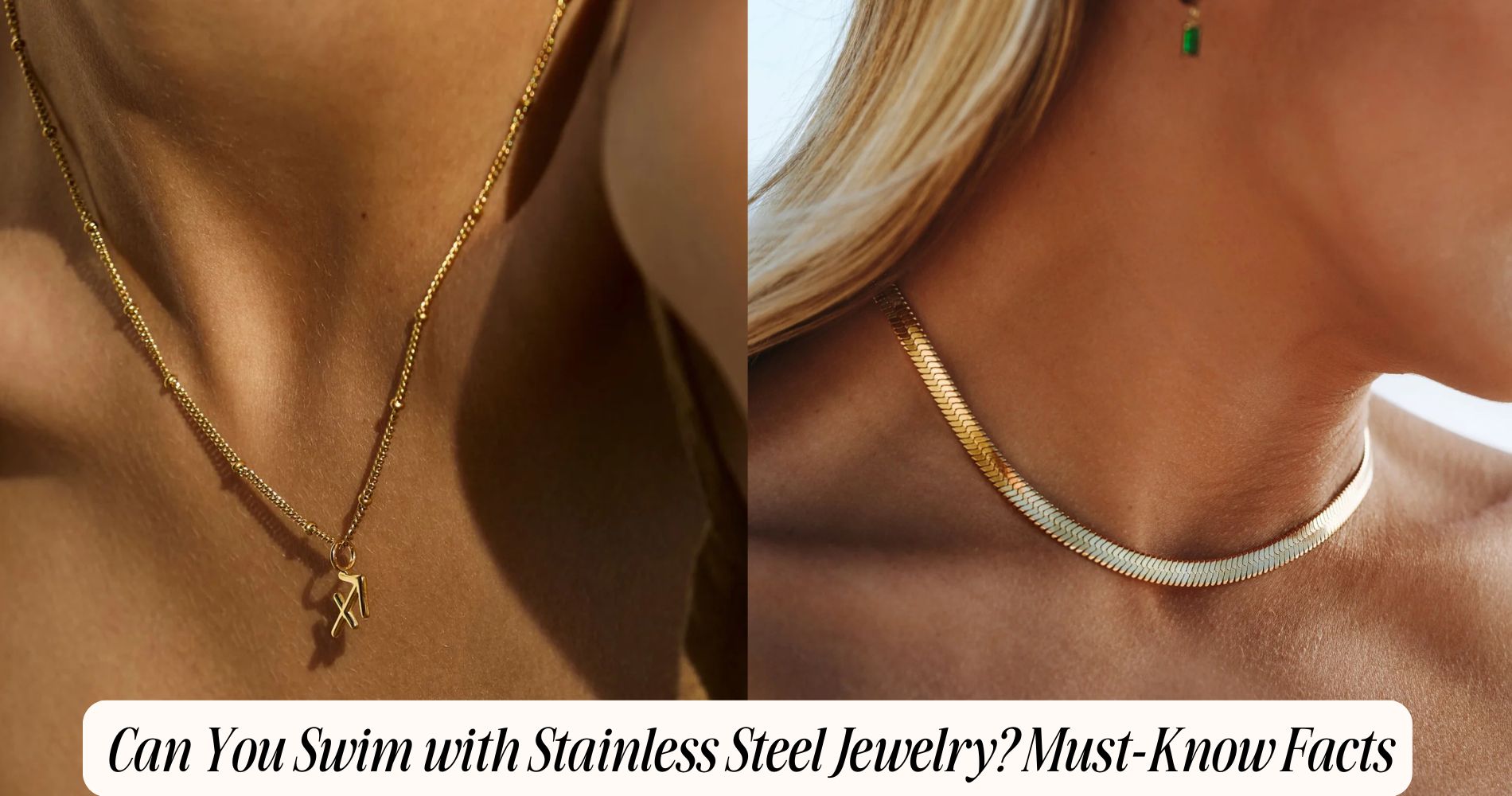
Can You Swim With Stainless Steel Jewelry? Must-Know Facts
Wondering can you swim with stainless steel jewelry? Absolutely! Its excellent corrosion resistance and hypoallergenic nature make it a great choice for water lovers. The chromium in the alloy creates a protective layer that prevents rust, allowing you to enjoy the water without worry. Just remember to be cautious with chlorine and saltwater, as they can gradually wear down the surface. After swimming, rinse your jewelry with fresh water and dry it thoroughly. For timeless, water-friendly styles, explore our Simple Stainless Steel Necklace Collection
Understanding Stainless Steel Jewelry
When you explore the world of stainless steel jewelry, it's crucial to understand its unique composition and characteristics.
Stainless steel, an alloy of iron, carbon, and chromium, creates a durable material ideal for intricate designs. Its design versatility allows you to enjoy pieces ranging from sleek minimalist rings to elaborately detailed necklaces.
This metal's hypoallergenic properties make it a top choice if you have sensitive skin, reducing the risk of allergic reactions commonly associated with other metals.
Experts recommend stainless steel for its affordability and resilience, providing a long-lasting, stylish option without compromising on quality.
Water and Corrosion Resistance
Having explored the benefits of stainless steel's durability and hypoallergenic nature, it's time to examine its remarkable water and corrosion resistance.
Stainless steel's composition, primarily iron, chromium, and nickel, guarantees exceptional resilience against corrosion. The chromium content forms a passive layer of chromium oxide, which acts as a barrier against water exposure. This layer considerably reduces the risk of rust, making stainless steel an excellent choice for jewelry that encounters water regularly.
When you consider wearing stainless steel jewelry during water activities, remember that its corrosion resistance is unparalleled among metals used in jewelry.
For ideal longevity, experts recommend rinsing your pieces with fresh water post-exposure to remove any contaminants. Adhering to this practice helps maintain the aesthetic quality and structural integrity of your jewelry.
Effects of Chlorine and Saltwater
While stainless steel jewelry exhibits outstanding resistance to water, exposure to chlorine and saltwater presents unique challenges.
Chlorine exposure, often encountered in swimming pools, can lead to a gradual weakening of stainless steel's protective oxide layer. This degradation might result in surface blemishes or minor discoloration over time.
Saltwater effects, due to its corrosive nature, can similarly undermine the integrity of the jewelry. The salt ions accelerate the corrosion process, particularly affecting any existing micro-scratches or imperfections.
To mitigate these risks, it's advisable to limit prolonged contact with chlorinated and saltwater environments. If you choose to wear stainless steel jewelry while swimming, regularly inspect for signs of wear and guarantee prompt rinsing with fresh water to preserve its longevity.
Maintenance and Cleaning Tips
To maintain the pristine condition of your stainless steel jewelry, it’s crucial to adopt a regular cleaning routine. Utilize mild cleaning methods, such as a solution of warm water and a few drops of dish soap.
Gently scrub your jewelry with a soft-bristled toothbrush to reach intricate details. Rinse thoroughly and pat dry with a microfiber cloth to prevent water spots. For tarnish resistance, consider a commercial stainless steel cleaner for periodic maintenance.
In terms of jewelry storage, store pieces separately in a lined jewelry box or soft pouches to minimize scratches. Avoid humid environments to prevent moisture buildup.
Implementing these expert recommendations guarantees longevity and retains the lustrous appeal of your stainless steel jewelry, maintaining its aesthetic and functional integrity.
Comparing Stainless Steel to Other Metals
When evaluating the merits of stainless steel jewelry against other metals, it's essential to contemplate several factors that influence both aesthetic quality and practical use.
Stainless steel benefits from exceptional corrosion resistance, making it ideal for aquatic environments. This metal offers significant durability, standing up to scratches and daily wear better than softer metals like silver or gold. Stainless steel's chromium content forms a protective layer, enhancing its resilience and luster over time.
In contrast, metals like silver tarnish quickly, requiring frequent maintenance. Gold, while visually appealing, is softer and more susceptible to deformation.
You should consider stainless steel's hypoallergenic properties, reducing the risk of skin irritation. Overall, stainless steel provides a cost-effective, robust choice for those seeking long-lasting, low-maintenance jewelry.
Style and Practicality Considerations
Considering the interplay between style and practicality in stainless steel jewelry, you'll find it strikes a remarkable balance that appeals to both fashion enthusiasts and practical users.
Stainless steel's versatility allows it to seamlessly integrate into current fashion trends, making it an excellent choice for those seeking modern aesthetics. Its sleek appearance mimics more expensive metals, offering a chic and fashionable look without the hefty price tag.
For everyday wear, stainless steel's durability guarantees that your pieces withstand daily activities and exposure to the elements, maintaining their luster and form.
Expert recommendations often highlight its hypoallergenic properties, making it suitable for sensitive skin.
With these attributes, stainless steel jewelry becomes a smart investment for both trendsetters and practical-minded individuals.
Real-Life Experiences and Testimonials
Although stainless steel jewelry is praised for its aesthetic and practical attributes, it's the real-life experiences and testimonials of wearers that truly underscore its value.
Explore personal stories and you'll find a plethora of user reviews highlighting durability and resistance to tarnish, even in chlorinated pools. One user noted, "I've swum daily with my stainless steel necklace for months, and it still looks brand new."
Another review praised its hypoallergenic properties, emphasizing comfort without skin irritation.
Experts recommend stainless steel for aquatic activities, citing its chromium oxide layer that prevents corrosion.
These personal anecdotes and professional endorsements collectively validate stainless steel as a reliable choice for swimming, offering both longevity and style without compromising quality.
Frequently Asked Questions
Can Stainless Steel Jewelry Cause Skin Allergies or Irritation?
You might experience skin sensitivity or allergic reactions with stainless steel jewelry, especially if it contains nickel. Opt for hypoallergenic options like surgical-grade stainless steel to minimize risks. Regularly clean your jewelry to prevent irritation and maintain skin health.
Is Stainless Steel Jewelry Eco-Friendly and Sustainable?
Yes, stainless steel jewelry is eco-friendly due to its efficient recycling process and sustainable sourcing. Experts recommend choosing pieces made from recycled materials, as this reduces environmental impact and supports the jewelry industry's sustainability initiatives.
How Does Stainless Steel Jewelry Impact Marine Life?
When you wear stainless steel jewelry in marine ecosystems, it generally doesn't harm aquatic habitats due to its non-reactive nature. Experts recommend ensuring your jewelry is nickel-free to further minimize any potential negative impact.
Are There Any Cultural Beliefs Associated With Wearing Stainless Steel Jewelry?
Stainless steel jewelry may not carry deep cultural symbolism or traditional meanings like gold or silver. However, you can explore contemporary interpretations, such as representing strength and resilience, reflecting modern values in various cultural expressions.
Can Stainless Steel Jewelry Be Engraved or Personalized Easily?
You can easily personalize stainless steel jewelry with custom engraving due to its durability and resilience. Expert recommendations suggest using laser engraving for intricate designs and professional finishes, ensuring your jewelry personalization remains sharp and long-lasting.
Conclusion
In conclusion, you can confidently swim with stainless steel jewelry, thanks to its impressive water and corrosion resistance. It withstands chlorine and saltwater better than many other metals, making it ideal for aquatic environments. For longevity, rinse your pieces in fresh water and dry them thoroughly post-swim. Compared to other materials, stainless steel balances style and practicality. Trust in its durability, but maintain regular cleaning to guarantee your jewelry remains as striking as ever.







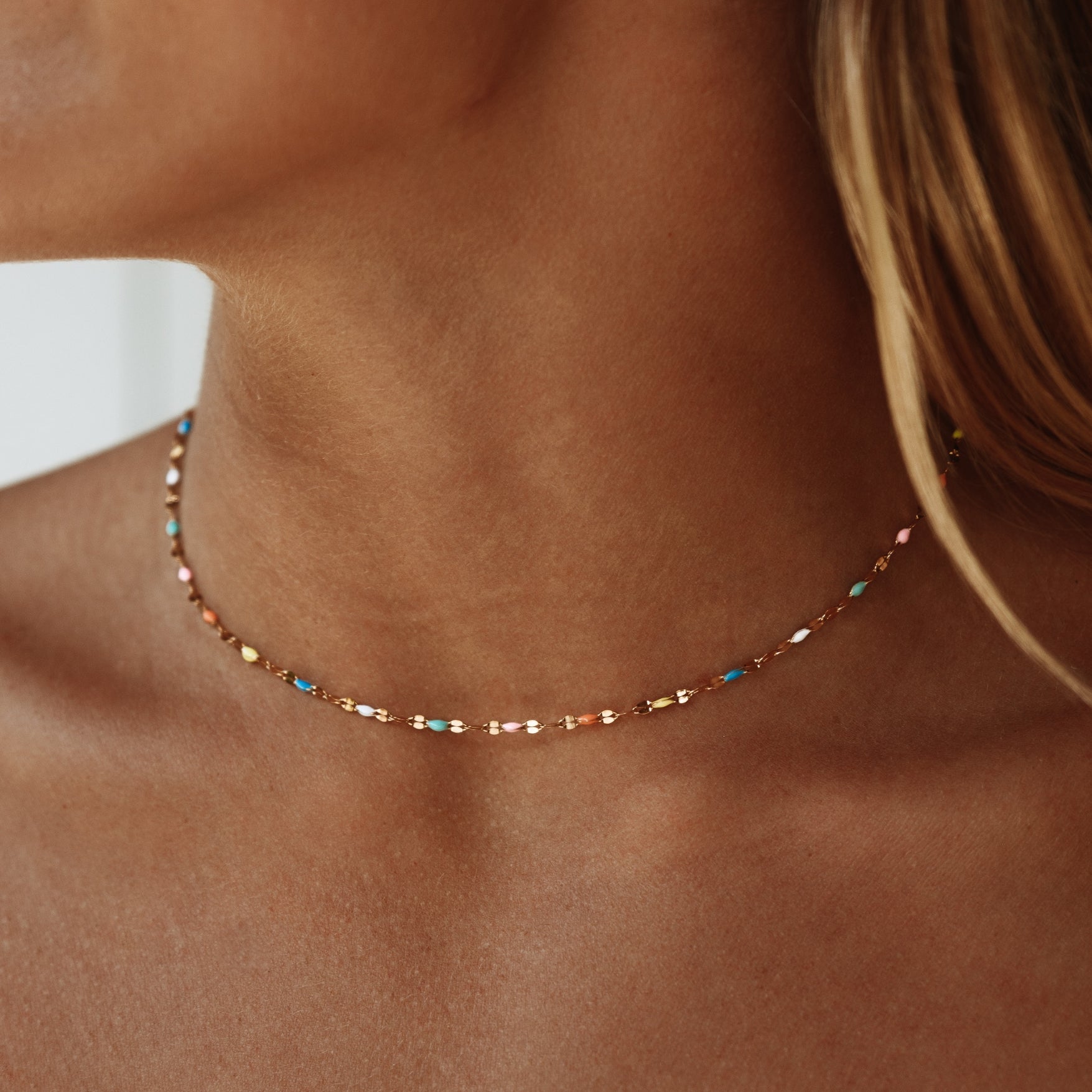
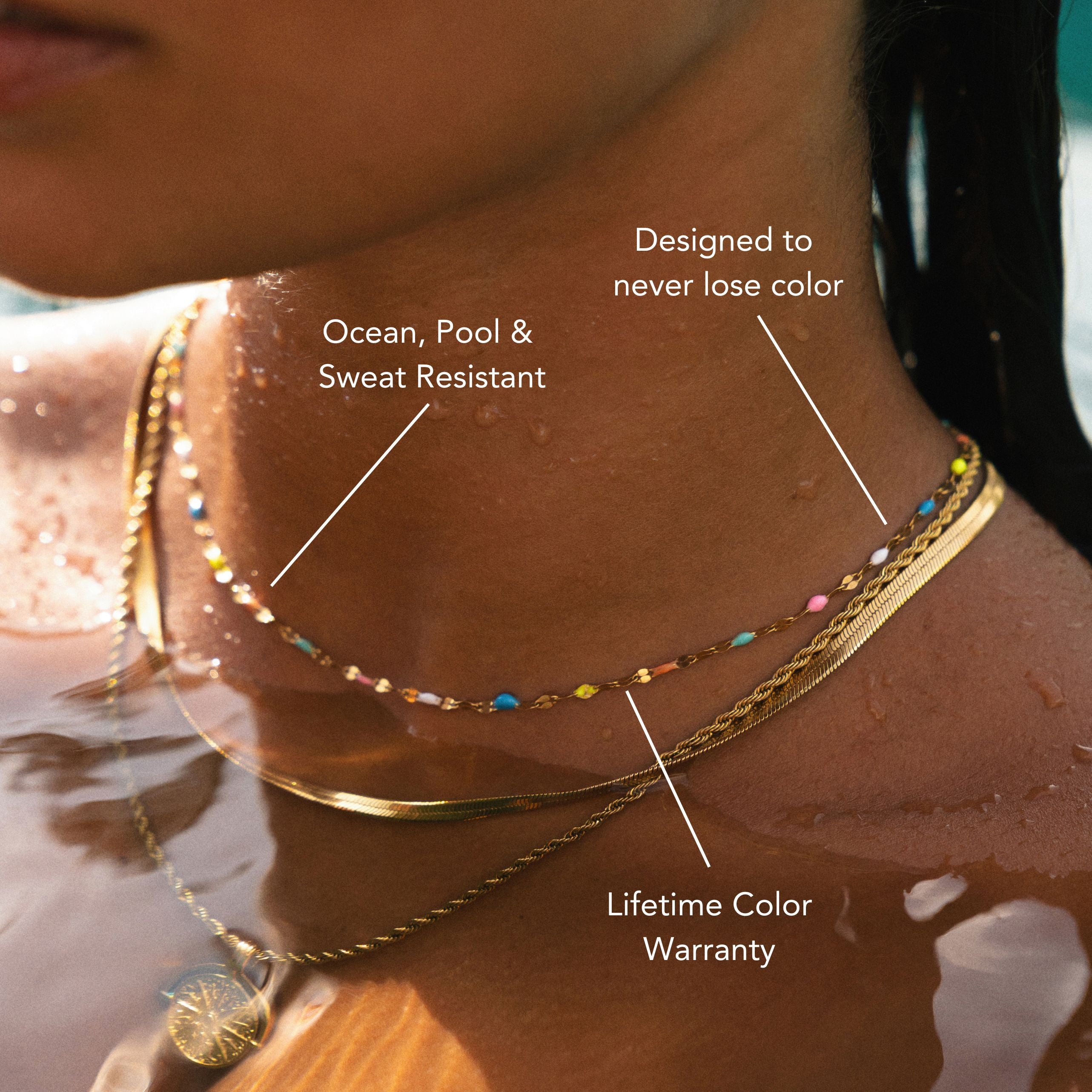
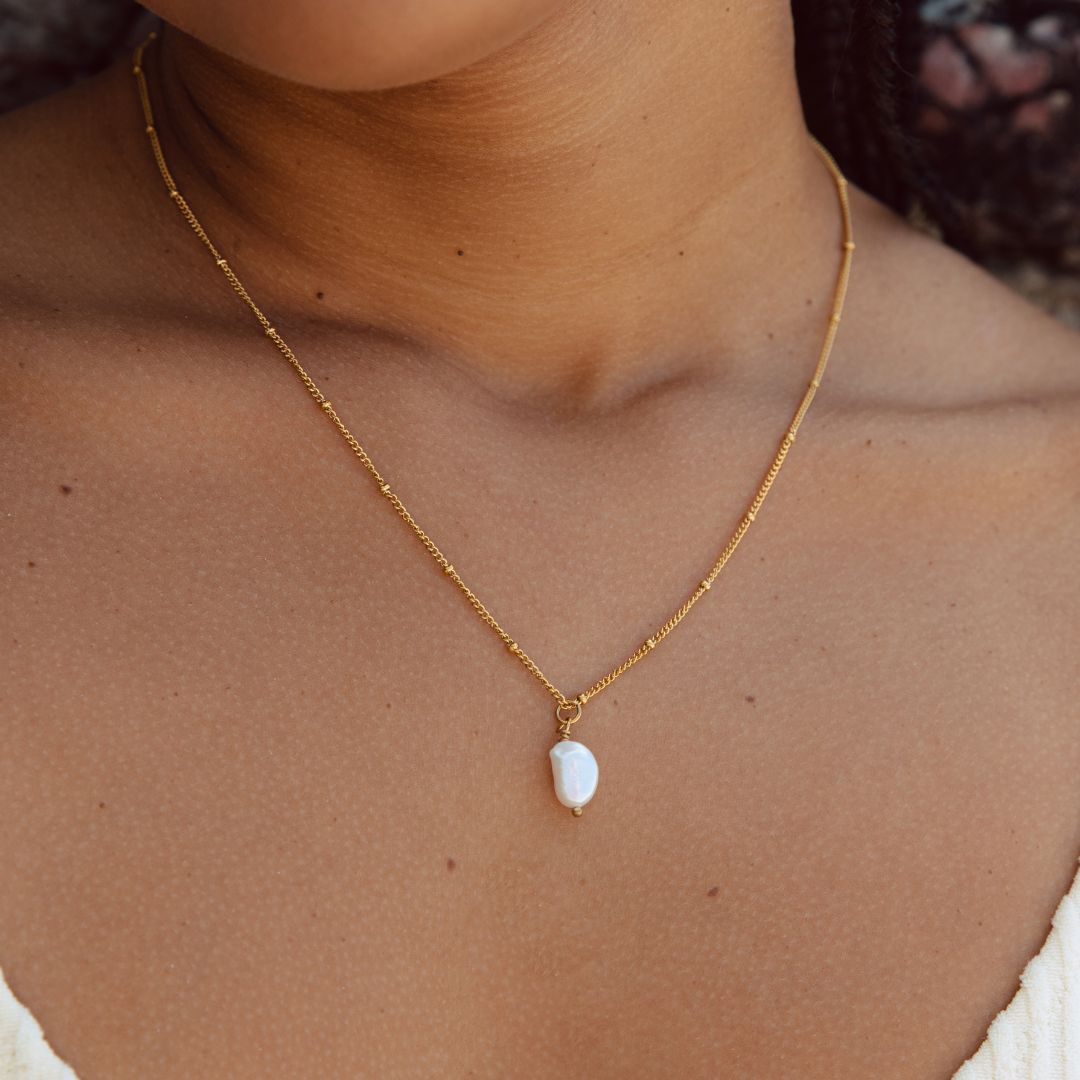

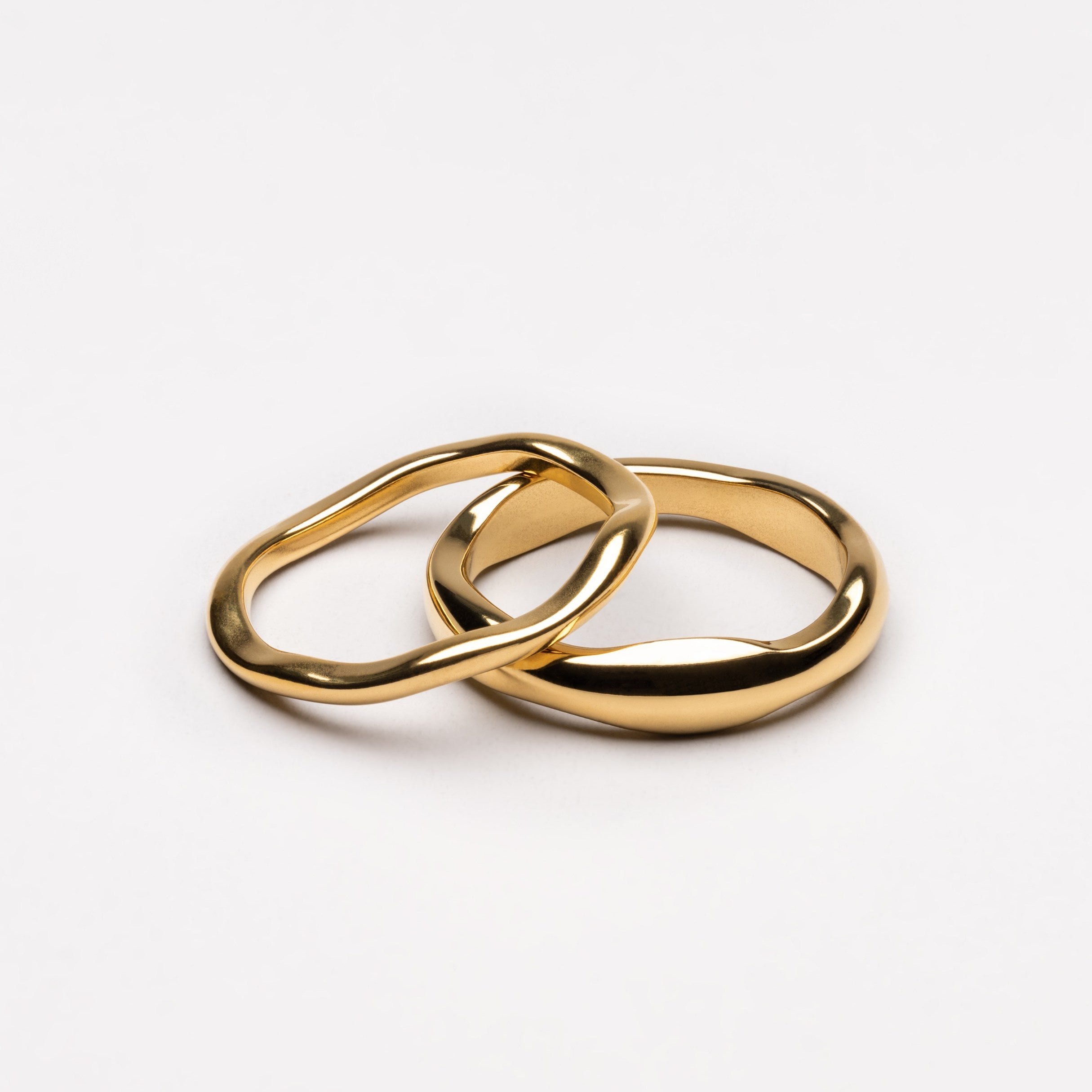


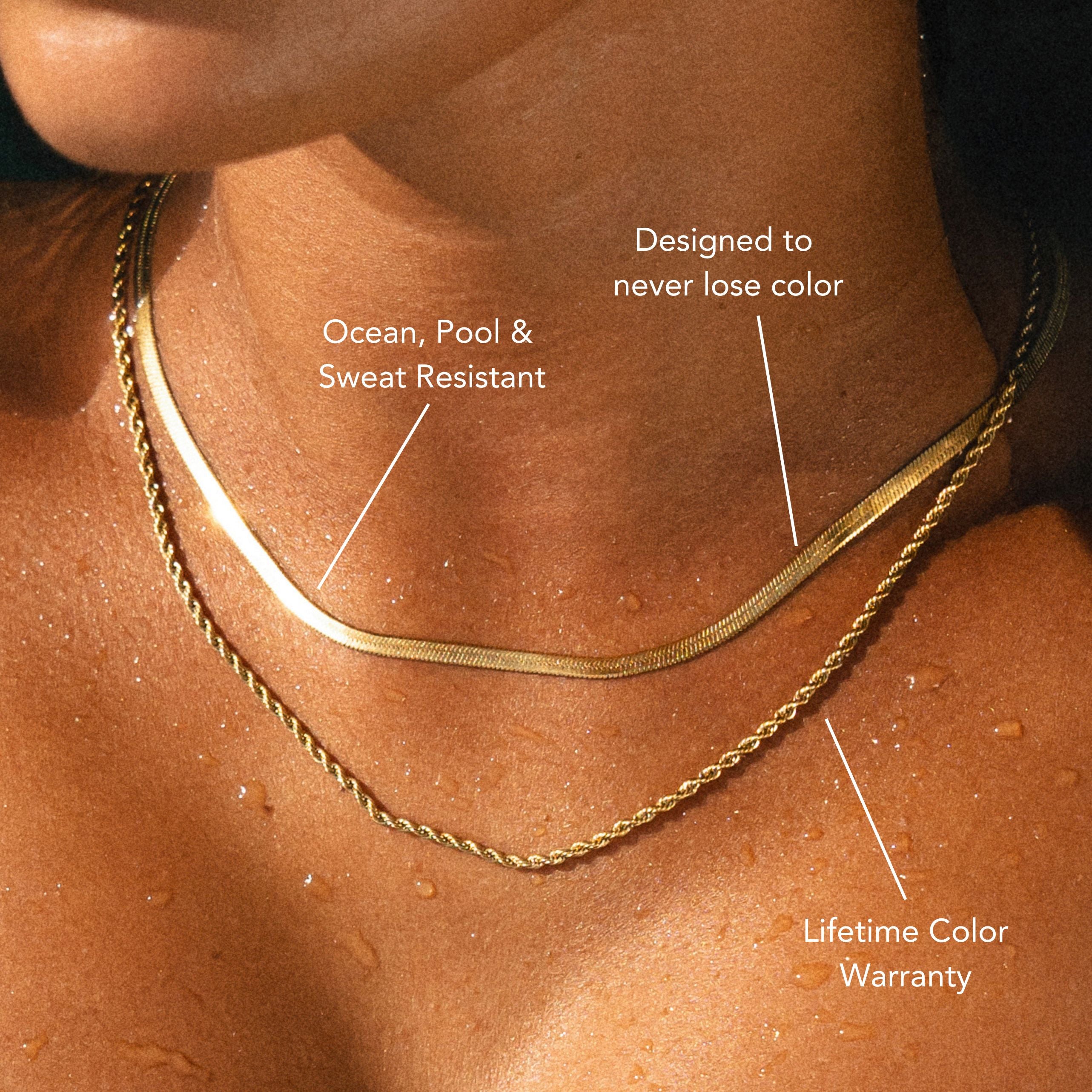

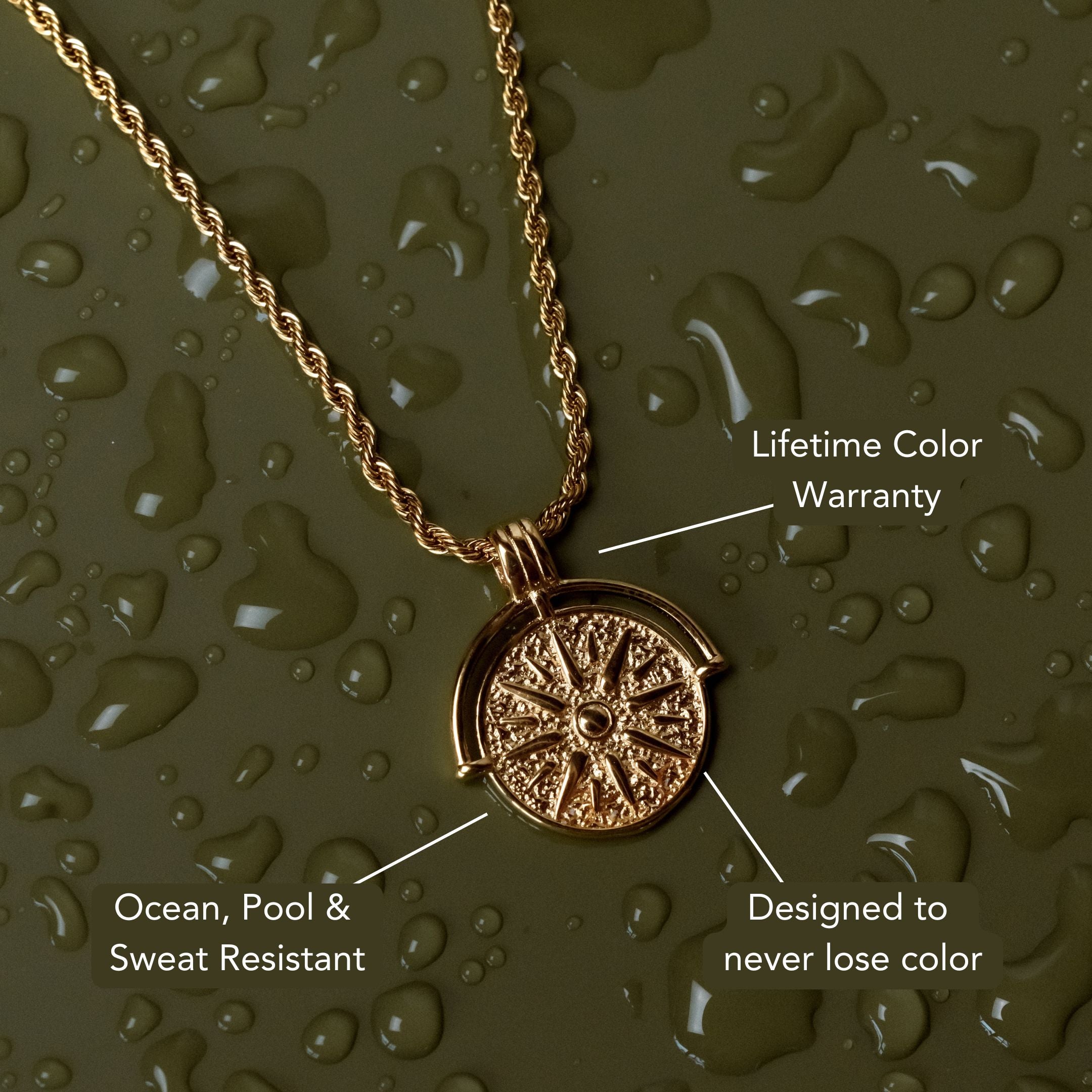
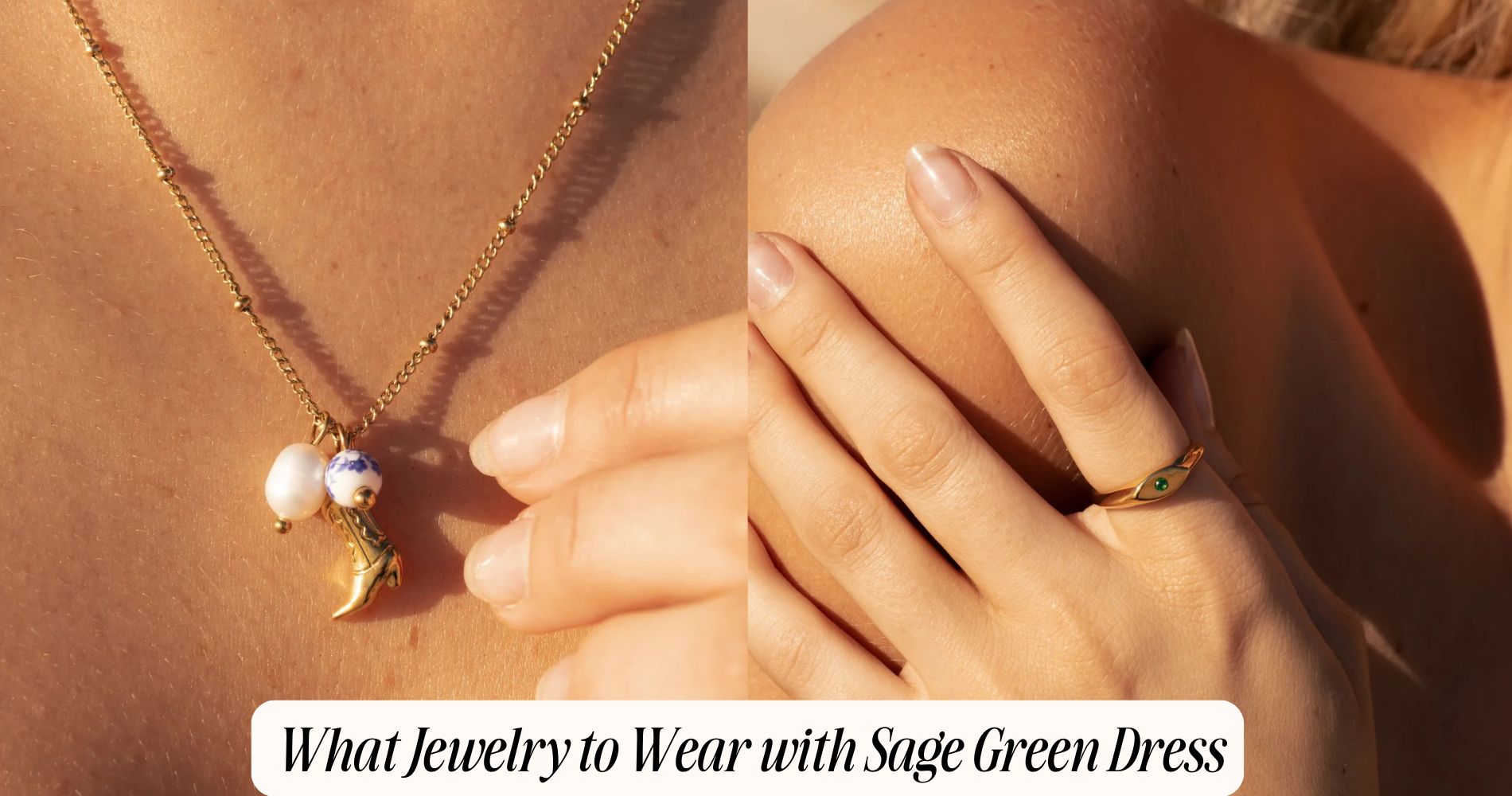
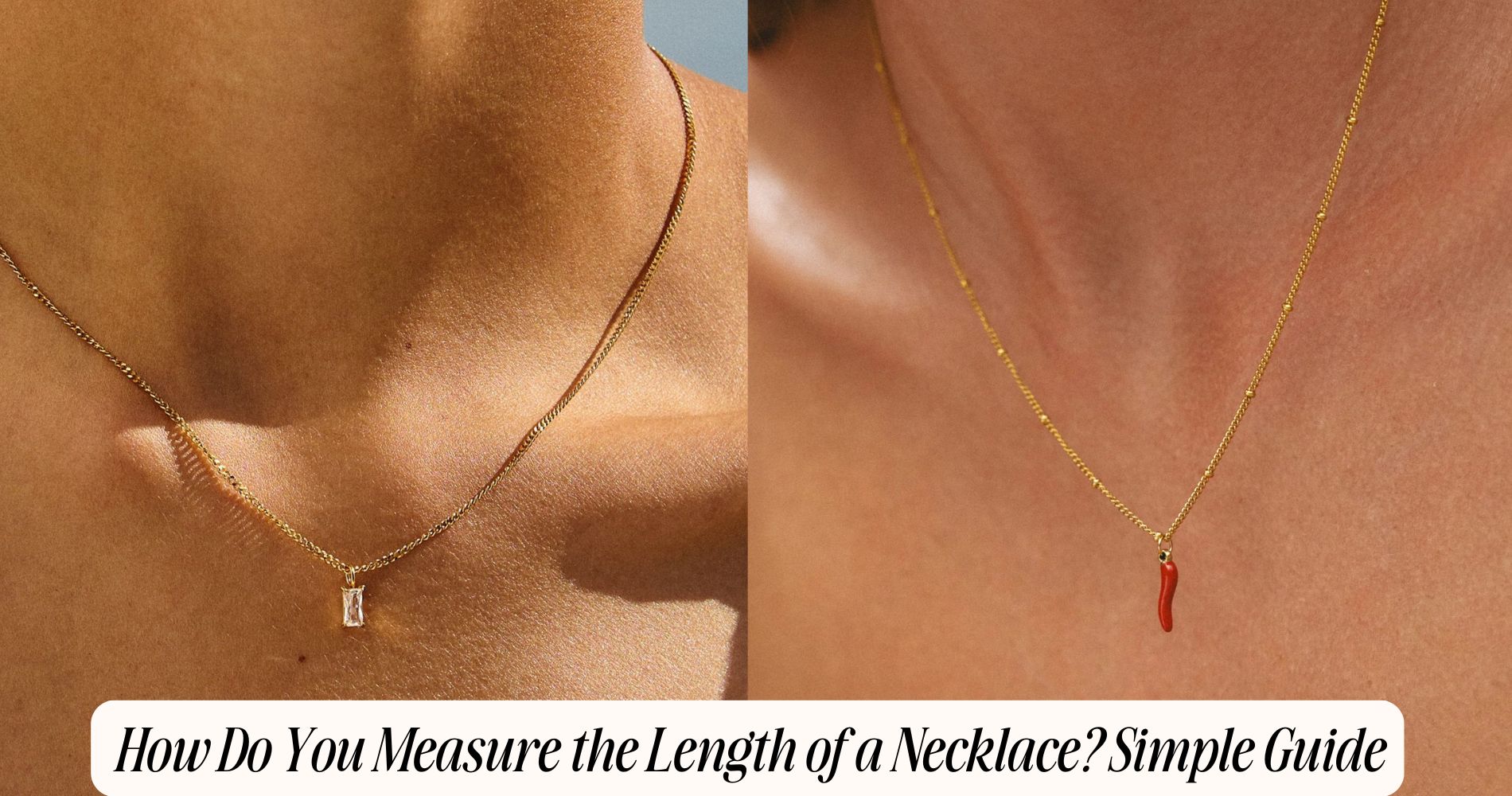




コメントを書く
このサイトはhCaptchaによって保護されており、hCaptchaプライバシーポリシーおよび利用規約が適用されます。